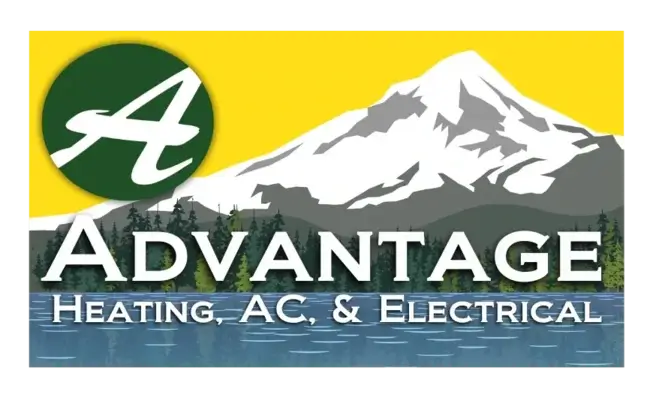UV Light for HVAC: How Do They Work?
If you or a loved one are immunocompromised, you’ve probably gone through extensive measures to make sure they are safe at home. For some people, this means disinfecting or sterilizing as much of their home as possible. We get asked what we think about a UV light for HVAC systems frequently.
We like them and think that they do offer value to people looking to reduce their exposure to germs. If you are immunocompromised, or just want to limit the number of germs you come into contact with, we are familiar with UV products that we can recommend in good faith. However, these systems may not be necessary for everyone.
Obviously, it is impossible to make your home 100% germ proof. These products sterilize the air coming through your HVAC system, which can drastically reduce the number of germs in your home. These systems work best as one part of a wholistic approach to home wellbeing. You should use UV lights alongside other systems, practices, and advice from a medical professional.
In this post, we’ll go over how UV lights for HVAC systems work, their price ranges, and give advice on how to maximize their impact on your home.
Does UV Light Kill Germs?
If this is your first-time hearing about UV lights, you might wonder how a light can kill germs?
There have been several studies into the effectiveness of UV lights and the different methods of using them around home. We’ll reference a few of them as we continue along. In short, UV lights do, in fact, kill a variety of contaminants.
What Does UV Light Kill?
- Viruses
- Bacteria
- Mold Spores
- Fungus
- Parasites
There are more classifications of germs that UV light lights kill that are not on this list. These are just the ones most commonly found in a person’s home.

How Does UV Kill Germs?
A UV light creates UV-C light. That means that it’s light with a wavelength between 200 and 400 nanometers. HVAC UV lights typically operate with a wavelength of 254 nanometers.

As we know from when we get sunburns, living cells absorb energy from light. The sun’s light contacts our skin. Our skin cells absorb the energy and, if there’s too much, we develop a sunburn.
When UV-C light contacts germs, it does something similar. The germ will absorb that light. That light stops the germ from being able to create new protein. That means the germ cannot reproduce or repair itself. The germ will die shortly after exposure because it can no longer maintain itself.
Of course, that also means that UV-C light is dangerous to our cells as well. That’s why it’s installed in the HVAC system, where the light cannot contact your skin.
How Effective are HVAC UV lights?
There have been several studies on how effective UV lights are at killing different contaminants. Some of these lights have been up to 99.7% effective at removing all contaminants in a controlled setting. Many light manufacturers will post that statistic on the packing.
But that is a controlled setting. You are unlikely to see that same result at home, because you probably don’t live in a sterile laboratory.
However, hospitals have been installing HVAC UV lights for decades, so that means they have to work, right?
So how do you know how effective your UV light really is?
Well, that depends on how it is used in your home and the specifics of the wavelength.
Air Handler Systems versus Handheld Systems
Using medical guidance from that study we just linked to, researchers have found that UV lights that are installed in closed spaces are much more effective than those that are not.
You may have seen products that look like a UV light wand. While a UV wand might have a specific use case for easy portability, it will do you little good for killing the germs in your indoor air. It won’t provide the right duration and quality of exposure needed to kill germs coming out of your HVAC system.
A UV light for an HVAC system operates in a closed space. The surface that the light shines on is solid and even. That means that the light will have enough time and exposure to the air to sanitize it.
The Right Wavelength
The other big factor is getting a UV light with the right wavelength. As we mentioned earlier, the UV lights we deal with have a wavelength of 254 nanometers. Sometimes, it’s around 253.7, but we round up for the sake of simplicity.
It’s true that UV-C light is all light with a wavelength of 200 to 400 nanometers. However, according to that same guidance, the most effective wavelength for at home UV lights is between 240 and 280 nanometers. So, HVAC UV lights sit in the optimal range comfortably.
Exterior Pollutants
UV lights are only effective at decontaminating air inside your HVAC system. If contaminants are coming in from outside your HVAC system, then it cannot possibly stop those.
Typically, these contaminants come from damage in the ductwork. If the ductwork comes unsealed, develops a leak, or collapses, then germs from the outside world can sneak into your indoor air.
Before an HVAC technician installs a UV light, they should inspect the duct work to make sure it is in good condition. Otherwise, the light won’t do much good.
Where is the Light Installed?
As we mentioned earlier, UV lights for HVAC systems are installed in closed spaces. They don’t hang outside your vents or air return. UV lights are installed in one of two locations based on the manufacturer’s instructions.
Indoor Coil
This is the most common location for a UV light to be installed. A technician will install a UV light in your indoor evaporator unit next to the unit’s coils. These types of lights typically run 24/7 and prevent bacteria and mold growth on the coils.
Ductwork
Another location a technician can install a UV light in is in the ductwork close to the blower fan. These lights can be wired to the furnace to only turn on when the rest of the HVAC system is running. By being placed in this location, any air that passes through your central ductwork will be exposed to the UV light.
Both locations have their merits. The HVAC technician that is installing your UV light will determine where the light should be installed based on the style of light and the design of your current HVAC system.
How Much Does It Cost?
The cost of installation will depend on the brand of light you purchase, the location it is installed in, and the quality of the installer.
You can expect a UV light for an HVAC system to cost between $800 to $1200. Talk with your HVAC company. They may offer contract discounts, or financing options.
Type and Location
Typically, lights installed next to the furnace or blower fan will cost most. This location requires additional electrical work to connect the light to the fan motor.
Quality of Contractor
A high-quality contractor will charge a higher fee. This is because they will take extra time and care when helping you improve your HVAC system. They will work with you to find the right light option and make sure to consider your whole HVAC and electrical system.
A lesser quality HVAC contractor may just give everyone the same light option, which may not even be effective. Then, they may blow out your electrical when they install it. It’s not unheard of for a company that did not do its due diligence to overload a circuit when adding to an HVAC system.
Do You Need a UV Light for Good Air Quality?
Here’s the takeaway. UV lights, when installed correctly and operating in the right wavelength, can kill germs in your HVAC system before they enter your home. Does everyone need one?
No.
If you or a member of your family are immunocompromised, or if your safety of mind requires that you make your home as germ proof as possible, then a UV light for your HVAC system can do a lot to help you reach that goal.

If you just suffer from occasional allergies or have stuffy air, then a UV light might not be a worthwhile investment.
In either case, there are other steps you can take to improve the air in your home.
What Else Helps Indoor Air Quality?
Here are some additional steps you can take to improve the quality of air that goes through your HVAC system:
- Change You Air Filter
- Clean Your Home Regularly
- Stay Current on Your HVAC System Maintenance
- Get A Separate Air Purifier
- Keep Indoor Humidity Low
- Keep Rooms Ventilated
Who Are Advantage Heating and Air Conditioning, LLC?
We are your local HVAC Experts out of Salem, Oregon. We hope that this post gave you the information you need to know if a UV light is right for you. If you have other questions about HVAC systems, check out our other blogs. To learn more about who we are and how we can help you, visit our website and follow us on social media – we’re here when you need us!







